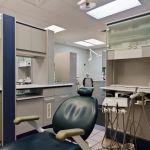Understanding Tooth Abscesses
Tooth abscesses can be a significant concern for your oral health. They occur when bacteria infect the inner part of the tooth, leading to the formation of a pocket of pus. This not only causes discomfort but can also have serious implications if left untreated.
Symptoms of Tooth Abscess
The symptoms of a tooth abscess can vary, but common ones include a severe, constant, and throbbing toothache. This pain may spread to your jawbone, neck, or ear. You might also experience tooth sensitivity to hot or cold temperatures, a bitter taste in your mouth, bad breath, gum redness and swelling, loosening of the affected tooth, a swollen area in your jaw, or an open, draining sore on the side of your gums. Additionally, more generalized symptoms such as fever, swollen lymph nodes, and overall discomfort can occur.
When to See a Doctor
If you have these symptoms, it's crucial to seek medical attention promptly. Don't wait for the pain to become unbearable or the condition to worsen. Seeing a dentist as soon as possible can prevent the infection from spreading and causing more serious complications.
Causes of Tooth Abscess
Several factors can contribute to the development of a tooth abscess. Severe cavities, broken, chipped, or cracked teeth, gum disease, injury to the tooth, and poor oral hygiene are all potential causes. Bacteria can enter the tooth through these openings and cause an infection that leads to the formation of an abscess.
Risk Factors
Certain factors increase your risk of getting a tooth abscess. Smoking, having a dry mouth, not taking proper care of your teeth and gums, frequently consuming sugary foods and drinks, and having a compromised immune system all make you more susceptible.
Diagnosis and Tests
To diagnose a tooth abscess, your dentist will examine the tooth and surrounding tissue. They may recommend dental X-rays or a CT scan to determine the extent of the infection and if it has spread. They might also tap on the tooth to check for sensitivity and perform other tests to assess the health of the tooth pulp.
Management and Treatment
Treatment aims to eliminate the infection and prevent complications. Options include incision and drainage of the abscess to remove the pus, root canal therapy to save the tooth by removing the infected pulp and filling the space, tooth extraction if the tooth is too damaged, and antibiotics to assist in the healing process. It's important to note that antibiotics alone won't cure the abscess; addressing the affected tooth is essential.
Prevention
Preventing tooth abscesses involves maintaining good oral hygiene. This includes brushing your teeth twice a day, flossing once a day, visiting your dentist regularly for check-ups and cleanings, and seeking treatment promptly if a tooth becomes loose or chipped. Drinking water with fluoride can also be beneficial.
Outlook and Prognosis
With timely and appropriate treatment, a tooth abscess should clear up. However, each case is unique, and healing times can vary. It's essential to follow your dentist's advice for post-treatment care. Remember, a tooth abscess won't go away on its own, and delaying treatment can lead to serious complications.
In summary, recognizing the symptoms of a tooth abscess is the first step towards getting the necessary treatment and maintaining good oral health. Regular dental visits, proper oral hygiene, and prompt action when symptoms arise are key to preventing and addressing tooth abscesses effectively. Don't ignore any signs of trouble in your mouth; your overall health depends on it.






 Absolute Dental - Lake Mead4.0 (332 review)
Absolute Dental - Lake Mead4.0 (332 review) Root Modern Dentistry5.0 (112 review)
Root Modern Dentistry5.0 (112 review) Dental Solutions Market Street4.0 (576 review)
Dental Solutions Market Street4.0 (576 review) Dove Family Dentistry5.0 (658 review)
Dove Family Dentistry5.0 (658 review) Dentist of Paoli5.0 (21 review)
Dentist of Paoli5.0 (21 review) Thrive Dental Studio5.0 (120 review)
Thrive Dental Studio5.0 (120 review) The Importance of Oral Health Education During Pregnancy for a Healthy Pregnancy
The Importance of Oral Health Education During Pregnancy for a Healthy Pregnancy Best Tips for Brushing Your Teeth Properly for Healthy Gums: Essential Techniques for Oral Health
Best Tips for Brushing Your Teeth Properly for Healthy Gums: Essential Techniques for Oral Health Why Skipping Dental Checkups Can Lead to Bigger Oral Health Problems
Why Skipping Dental Checkups Can Lead to Bigger Oral Health Problems Advantages of Porcelain Dental Restorations
Advantages of Porcelain Dental Restorations How Can Diabetes Cause Tooth and Gum Problems? Preventing and Managing Oral Health Issues
How Can Diabetes Cause Tooth and Gum Problems? Preventing and Managing Oral Health Issues Healthy Habits for Promoting Good Oral Health and Hygiene: Tips for a Healthy Smile
Healthy Habits for Promoting Good Oral Health and Hygiene: Tips for a Healthy Smile